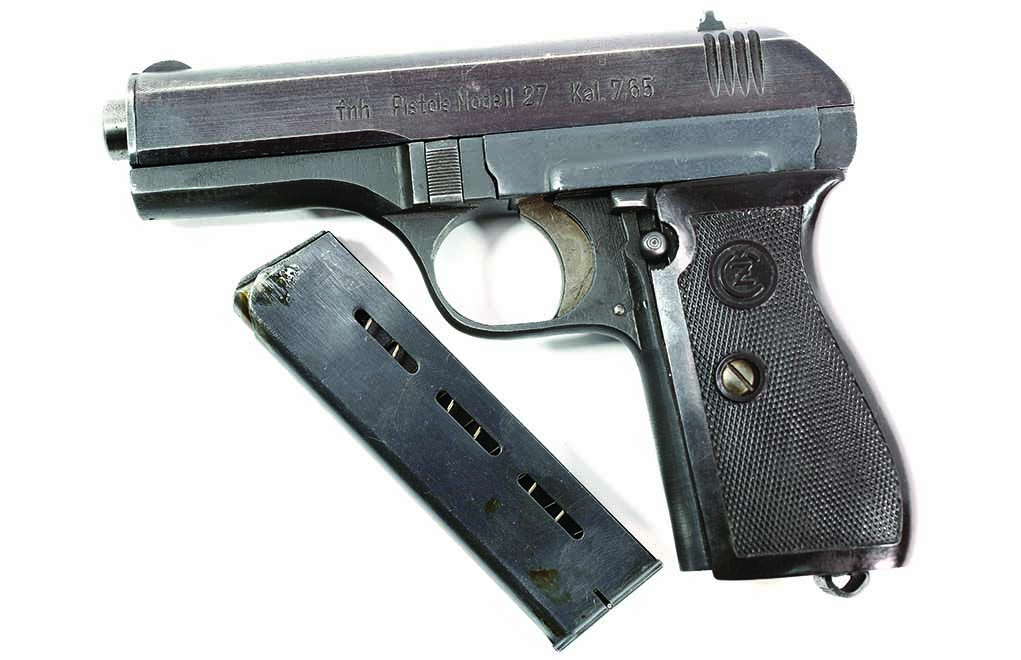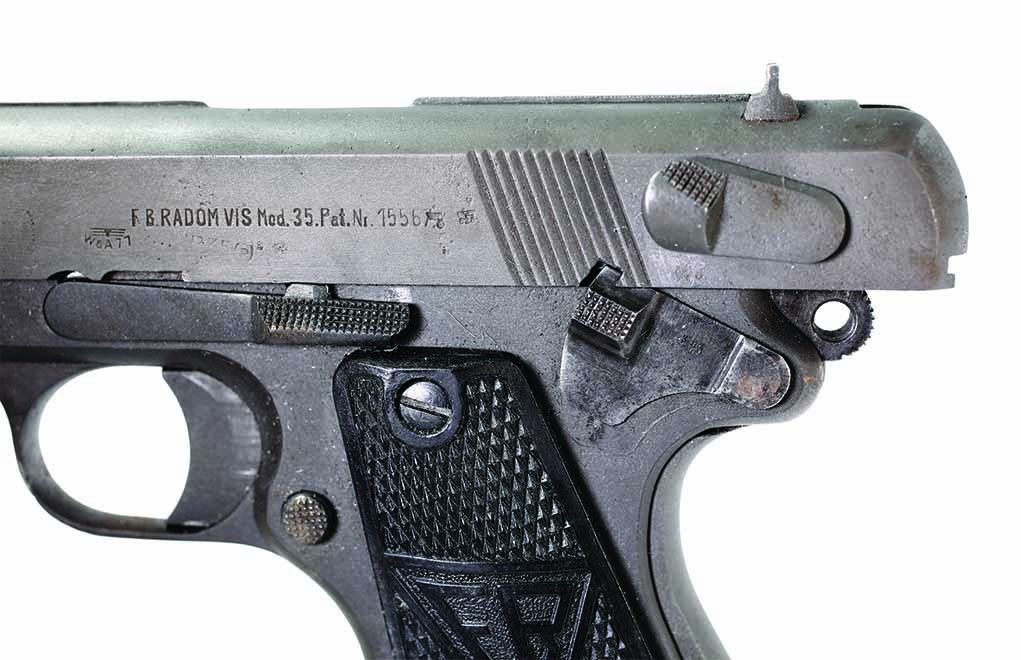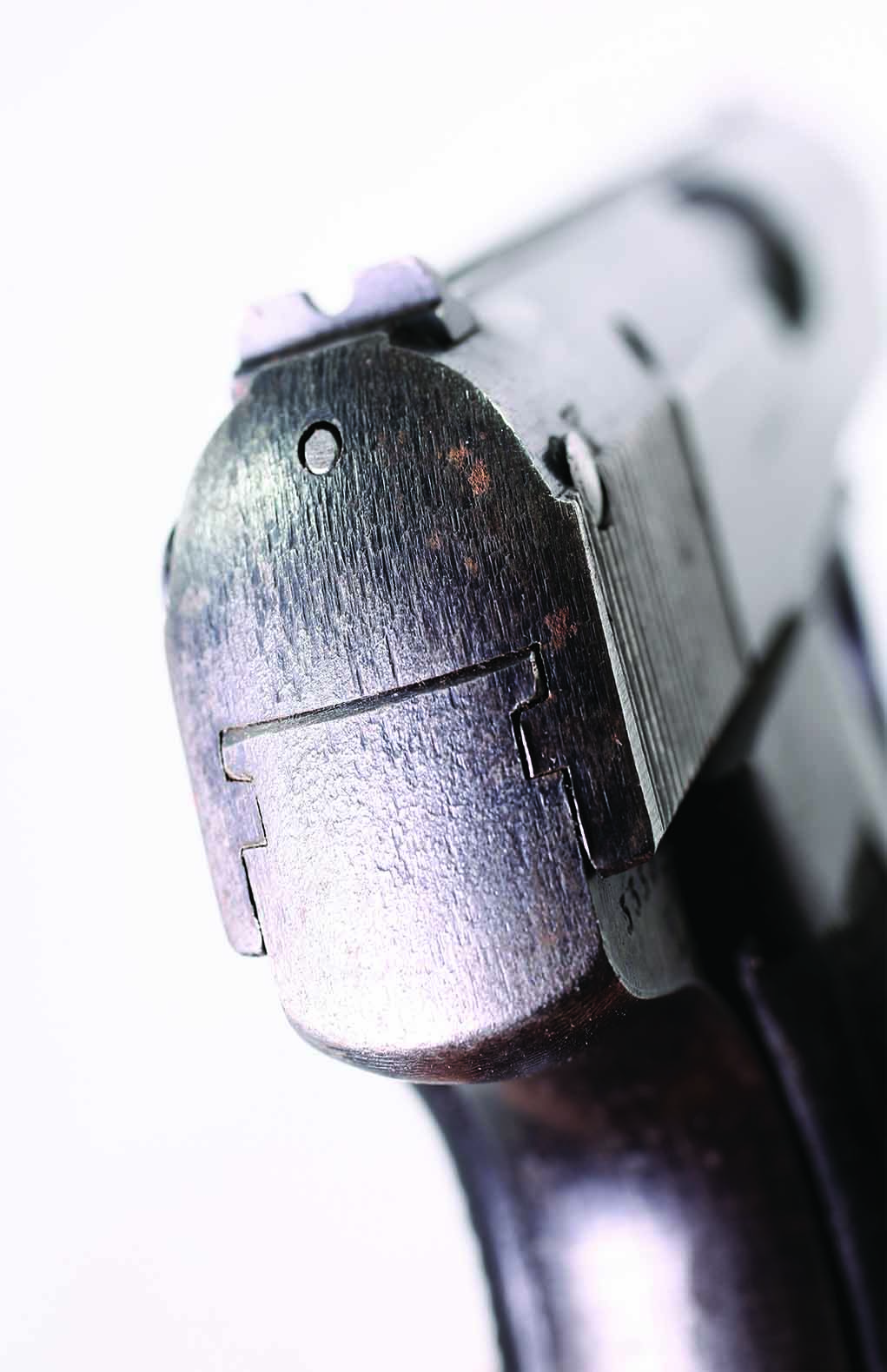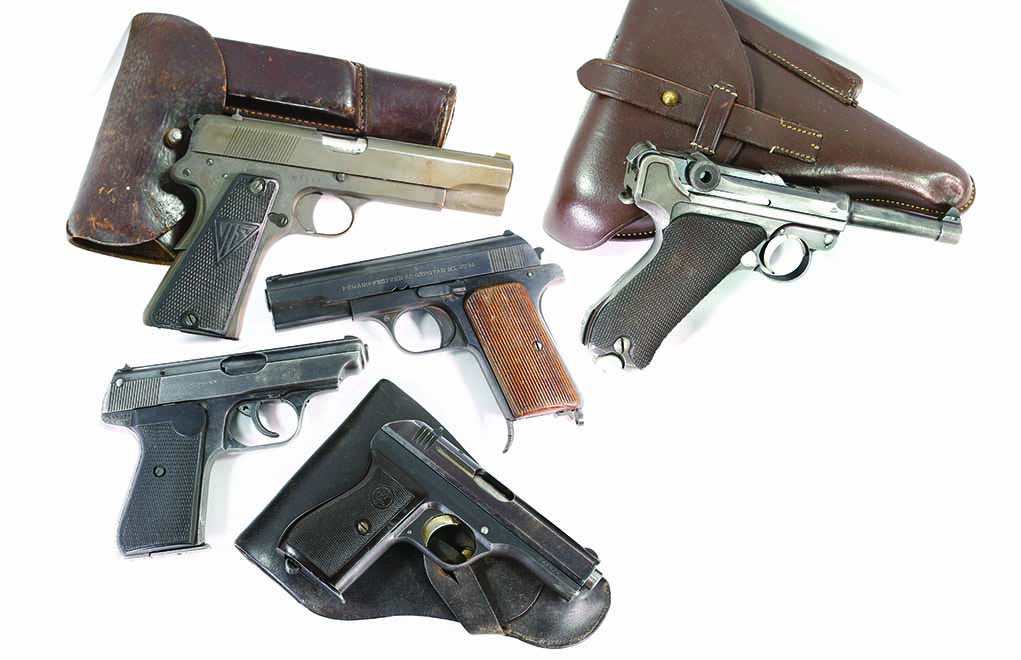Classic guns must have either jaw-dropping looks or a storied history. Ideally, they’ve got both, such as these German pistols of World War II vintage.
Working in gun shops around Detroit, we used to have regular visitors of types you rarely see anymore. Once a week, a month or even a few days in a row, someone would walk in, holding a box or a case.
They’d inevitably start with, “I bought a house in Detroit, and … ” or “My grandparents moved to Florida, and I found … ,” and then open the box or case to reveal a firearm.
Given the age of the homeowners (the old homeowners, not the new ones), along with the fact that many of them were veterans, the iron in question was often something back from a war.
The shops I worked in were not alone in this, and it was common to walk into another gun shop and see something pre-1945 in the used case.
Here are a few of the common handguns you’d see.
Luger
A Luger—of course! There wasn’t a German pistol more desired than a Luger. The ones you saw in gun shops were the ones with no “papers.” The ones with “bring-back papers”—the official permission given by the Army—were snapped up by collectors.

Mine started life as a “sneak” pistol, manufactured by BKIW in 1929. In order to get around the Versailles Treaty limitations on production volume, it had no chamber date.
Mine wasn’t made for military use; it was meant to be used as a police pistol. As a result, it had the Weimar-required “police safety,” a modified sideplate with a spring clip on top. A bit of history and a warning: If you disassemble a Luger with a round in the chamber, it can remain cocked—and be fired in the disassembled state. I’m not making this up! German police officers apparently did just this often enough to require a regulation and a design change. The safety prevents firing when so (and incorrectly) disassembled. Mine also had a magazine disconnector, but those were all (or almost all) removed when the regulations were changed.

My Luger went to the Hildesheim Rural Police District, where it was inventoried and marked as weapon number 134. Where it was and what happened between 1945 (when it was probably snatched up by a GI in Germany) and my acquiring it, I have no idea. From 1900 through 1945, around 3 million Lugers had been made. And yet, they aren’t commonly seen.
CZ 27
When the Germans invaded a country, they usually kept the small arms and military-industrial production capacity of the conquered country up and running. A lot of the second-line armored vehicles and many trucks were Czech, French, Polish and so on. The CZ 27 (aka Vz 27) is a blowback .32 pistol (for a long time, Europeans were really enamored of the .32) with a complicated manufacturing process, but it was reliable, accurate and dependable.
With an eight-round magazine and all the throw-weight of the thundering .32 ACP, it isn’t Thor’s hammer. However, it was made in large quantities (more than 450,000 during the war) and was issued to army and police units.
The interesting thing about the CZ 27 is the safety. That tiny, little lever that you see behind the trigger? That’s the safety. Press it down until it clicks, and it’ll lock in place—but only when the hammer is cocked. The safety (as much as you’re willing to trust it) is on. How do you get the safety off in order to fire it? You press the small button underneath the safety lever. The lever pops up, and you’re ready to go.

As mechanically clever as that might be, I suspect that the vast majority of users during the European “fracas” carried it with the safety off—with an empty chamber—and racked the slide when they had need of a supply of .32-caliber “Europellets.”
Obviously, this isn’t a pistol you’d be choosing for an IPSC, IDPA or other competition.
More Classic Military Guns:
P-35
No, not the Belgian Hi-Power. The Polish one—the VIS35, the Polish 9mm single-stack pistol. As a newly reconstituted country after World War I, Poland began building up its armed forces and arms manufacturing. It bought what it needed to start, but it wanted to have the arms manufacture it needed under its own control (always a wise idea … as we’ve since discovered with pharmaceuticals from China).
The P35 is an all-steel, single-stack 9mm that’s perhaps the strongest 9mm ever made. It’s also … odd.

That lever on the left side on the slide is a decocking lever. The one below it on the frame is a takedown lever. No, it’s not a thumb safety. But there is a grip safety.
The Polish manual of arms called for loading the pistol, chambering a round and then using the decocking lever to drop the hammer. Then, when you needed to shoot it, you’d thumb the hammer back. Or, if you were Polish cavalry, you’d run the hammer against your saddle.

The VIS35 was relatively rare here, in the United States, for one simple reason: Most of those (the Poles made 50,000; the Germans made 350,000 of them) went to the Eastern Front. About the only way a GI could lay hands on one was if his unit captured a German unit that had been rotated from Russia to France for R&R. This wasn’t unusual. Units that had been hard-used on the Eastern Front would be sent to France, given replacements, allowed to rest, re-equip and train, and then get sent back to Russia.
The rarest of the rare is a shoulder stock for the VIS35. I saw one in a Belgian military museum, and the experts there were not entirely sure if it was real or a very clever fake. Why were they unsure? It was the only one they or anyone they knew “in the business” had ever seen in real life.
FEG 37M
Known to shoppers back in the day as the “Femaru,” this was another local design taken over by the Germans (well, bought by the Germans, because Hungary was an ally, not a conquered territory). The original—the Hungarian model—was in .380 and lacked a thumb safety. The Germans wanted them in .32, and they insisted on a thumb safety. Once the war was up and fully running, the Germans sent inspectors to the Femaru plant. There, you’d have seen wartime pistols with the Waffenamt and acceptance stamp, per German regulations.
The FEG 37M is the first of the pistols we’re looking at here that had a factory lanyard loop installed. On the Femaru, the mag catch was a heel clip. Right next to it was the pivoting lanyard loop.

As a 28-ounce pistol chambered in .32 ACP, the recoil isn’t anything to pay much attention to. It’s accurate and reliable (curiously, even cheap .32s can be quite accurate, and the FEG37M was not made cheaply), but the magazine capacity is only seven rounds.
There were only some 80,000 of these made, and the majority of them went not to the German army, but to the Luftwaffe. Nevertheless, they weren’t sent in specific serial number blocks, nor were they marked as such.
Sauer 38H
This is one of my favorites—and it’s another oddity. It’s a single-/double-action German pistol with a lever behind the trigger for that work. You can decock it by using the lever. You can then re-cock it using the lever. The lever is spring-loaded and pops up—regardless of whether it’s cocked or uncocked. But, there’s a safety lever on the slide that has to be at “fire” to do any of that. The hole drilled through the trigger, up near the frame, was more or less the “cocked”/“uncocked” indicator. On the back of the slide is a loaded-chamber indicator.
This one was only made to the tune of some 116,000 pistols, but it went to the army, Luftwaffe and Waffen SS. Like the others, it’s an all-steel pistol, and it’s chambered in .32 ACP. However, this one, at least, was even more accurate than the usual, quite-accurate .32 pistol.
Back in the 1980s, my gun club had fairly portable steel silhouettes for pistol practice. I won a number of bets getting hits at 50 yards on the steel with a “Nazi .32 pocket pistol.” I’d usually wager five hits in a row for 10 bucks. And, after I made the five hits, I’d bet double or nothing that I could finish the magazine with hits. I never lost, because with the ammo it liked, my Sauer 38H could keep all its shots inside the “A” zone of an IPSC target at 50 yards.
Oh, and the “H” designation? It indicated that it wasn’t striker fired but used a concealed hammer.
P-38
I never warmed up to this German pistol; I never acquired one, I still don’t own one to this day. Sorry about that.
Trophy Pistols
Pretty much everything any enemy soldier was carrying—short of personal property (and even then, some of that wasn’t safe)—was a souvenir. GIs were like locusts, sweeping up whatever was attractive and carrying it, trading it, wagering it in poker games or even mailing it back home. And because police officers were essentially just localized military units in the German organizational structure, what they carried got snapped up as well.
My late father was cheerful in describing the first German “soldier” they captured in Germany … only to find out he was an armed tram conductor (this was more humorous and less hazardous than the first time they encountered a Waffen SS unit).
So, despite the assurance that “it came off a dead Waffen SS major/Panzer commander/fill-in-the-prestigious-enemy-combatant,” most of the German pistols brought back were taken from NCOs. There were a lot more sergeants, machine-gun crew members and the like. And they all received a pistol of some kind. In addition to the NCOs and others who were issued pistols, they were issued or authorized to police, postal and railway security, factory guards, forestry officials and all the various “suits” who ran bureaus, agencies, commissions and the secret police.
Once captured, these men were relieved of their sidearms, medals and sometimes, even uniform jackets and any other souvenirs.
These items were stuffed into a duffel bag, which GIs then hauled onto a ship and then back home. Once home, no one really cared all that much (except for a few jurisdictions).
That’s how we came to see a regular stream of such pistols in the 1980s as our veterans started slipping away.
Today? An entire generation of collectors has been snatching them out of gun shops, off gun show tables and from the estates of earlier collectors. To see any of these today in a gun shop is a near miracle. Back then, these German pistols were very common. And now, I regret that I passed them by.
Editor’s Note: This article originally appeared in the July 2020 issue of Gun Digest the Magazine.
 NEXT STEP: Download Your Free Storm Tactical Printable Target Pack
NEXT STEP: Download Your Free Storm Tactical Printable Target Pack
62 Printable MOA Targets with DOT Drills – Rifle Range in YARDS This impressive target pack from our friends at Storm Tactical contains 62 printable targets for rifle and handgun range use. Target grids and bullseye sizes are in MOA. Ideal for long-range shooting! Get Free Targets

